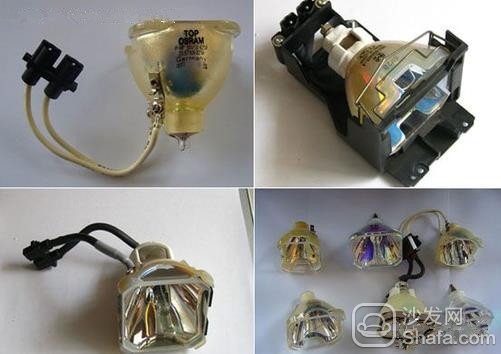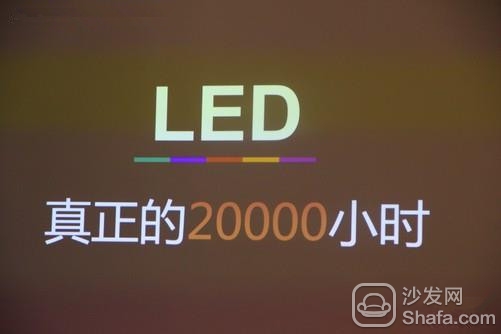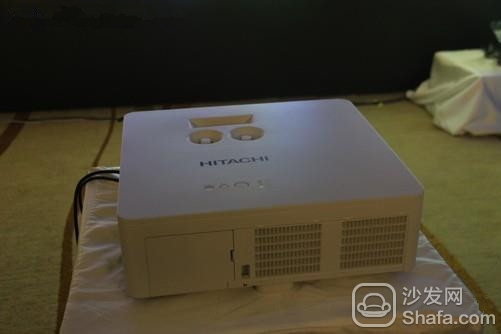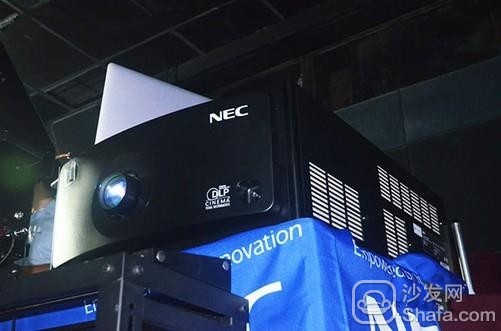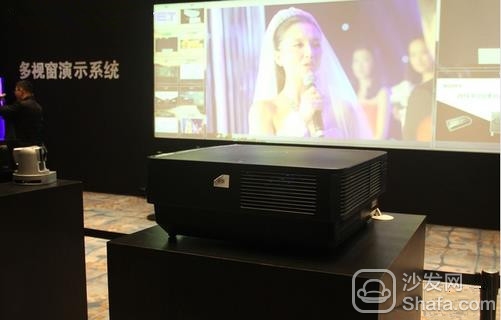The brightness of 3,500 lumens is nothing for ordinary projectors. The brightness of a projector with a conventional lamp source can easily achieve 4000 lumens. However, for projectors with LED light sources, it is very rare for the brightness to exceed 1000 lumens. Hitachi recently launched a 3500-bright LED projector, this product really surprised people in and outside the industry. What does this breaking product mean in the end?
LED light source life and death rob Japan projection "lit" market?
Ordinary consumers may be curious about Hitachi's technology. Has Hitachi mastered the new technology, thus breaking the ambiguity of the LED light source? Is this new light source popularized and really making light bulb change history? To answer these questions, we still have to start from scratch. After understanding the LED light source technology, it is believed that ordinary consumers will have different perspectives on the new machines released by Hitachi.
Although traditional projector bulbs can achieve high brightness, they bring many problems to the product.
We know that traditional projectors use light bulbs. This kind of special light bulb in order to enhance the brightness, at the cost of shortening the life, often use heavily, after 1000 hours the luminance decay is very obvious. And this kind of bulb will bring about high heat, and the efficiency of electro-optical conversion is low. More often, the user's electrical energy is converted into heat energy. To handle this heat, the projector needs a good heat dissipation configuration (fan). The problems caused by the light bulbs are not limited to these. The projection light bulbs have extremely strict requirements for dust, and the accumulation of dust will cause the light bulbs to dissipate heat unevenly, which will result in the emergence of blow-out lamps. Therefore, the projector needs good dustproof performance. In addition, the large size of traditional projection light bulbs has also led to the projector's inability to achieve miniaturization.
It can be seen that the traditional bulb light source makes the projector design miserable. In order to solve these problems, after the birth of the new LED light source, the efforts to introduce this light source into the projector field have not stopped. In addition, researchers are constantly considering the possibility of introducing other light sources. Currently on the market has formed a laser light source, laser and LED hybrid light source and pure LED light source three new light source co-development status. So what's special about LED light source?
The rapid development of LED light sources in the projection industry has technical reasons. The first is that the LED light source has low energy consumption and the luminous efficiency is better than the conventional light bulb, which means that the user can achieve the same brightness as the bulb projector with a lower power. For projectors, which are large consumers of electricity, energy-saving upgrades are imperative. Therefore, consumers, companies and countries all hope that this energy-saving technology will be launched quickly.
In addition, the LED light source performs better. Due to the impure color, the traditional bulb light source has always been greatly limited in the improvement of the color gamut. LED light source can solve this problem very well. The color gamut is more broad and the colors are more pure. This is the advantage of LED light sources. Another advantage that can't be ignored is that LED light source has a long life, and the service life is 20,000 hours, so that users no longer have to worry about the issue of post-maintenance. The stable state of the LED light source also leads to a more flexible use of the projector. The conventional projector can only be mounted or placed smoothly. The LED projector is not tied to use. The angle of the camera can be any angle.
LED light source has the advantage of long life
Above we said that LED light source has good luminous efficiency, but there is a short board in brightness. Due to the limitations of LED materials, the brightness of a single LED module is not infinitely increased in the current technology. Excess electricity will be converted into heat energy. The heat will hurt the life of the LED light source. To increase the brightness of the LED backlight, the current solution is to increase the number of LED modules. Adopting the “quantity-for-brightness” approach will not only increase the size of the projector, the cost of the product will be very high, and the problem of heat dissipation will be very difficult to solve.
Hitachi released 3500 lumens LED projector is not small
Based on this technical limitation, current projection companies rarely take the initiative in highlighting LED projectors. After all, the state of the art is such that there is no essential breakthrough in LED materials. There is no good way to increase the brightness of LED light sources. Therefore, Hitachi's high-brightness LED projector has reached 3,500 lumens. The increase in brightness means increasing the number of LED modules.
New light sources are generally configured using modules
I also saw engineering prototypes for this product. The large body shows that this product is indeed highlighted by adding LED modules. So why did Hitachi do this? Hitachi's new products reveal what kind of situation in the projector market? Next we analyze this issue.
Hitachi's introduction of high-brightness LED projectors is not a whim, and since 2014, new light source projection products have begun to break out, and laser products have stood in the high-end market. To achieve tens of thousands of lumens of screen brightness, traditional projector light bulbs are overwhelmed, and laser light sources have become the choice of high-end markets. In the ordinary consumer market, LED projectors with around 1,000 lumens continue to hit the market. These products started as big-ticket financing under the banner of "mobile cinema" and "non-screen TV" and seized the market for traditional home projectors.
High-end market favors laser light source
At present, the most stable market for traditional bulb projectors is the business education market. This market segment needs about 3000 lumens to 4,000 lumens of brightness. Because the LED light source cannot reach this brightness, it is more difficult for the laser to achieve high brightness on the basis of miniaturization. Therefore, if a new light source is to enter this market, the LED highlight projector becomes an alternative solution.
Multi-window demonstration system composed of laser projector
But such new products also face two challenges:
First, LED highlighting projectors have high costs, severe heat dissipation problems, and huge volumes. What is the target market for such products? Traditional business education users cannot accept such products, and the engineering market needs ultra-high brightness, which cannot be satisfied.
Secondly, the development speed of laser light sources is also fast, and the development of high-bright miniaturized lasers is getting faster and faster. It is inevitable that the market will enter 3000 lumens in the future; LED light source+laser light source hybrid light source products have also achieved 3000 now. Brightness above lumens, and has an advantage in volume. Compared with these two light source technologies, the advantages of high-brightness LED products are not obvious.
4000 lumen laser projector
In the frequent use of 3000 lumens to 4000 lumens brightness range, the new light source projector has a great market gap. Hitachi's high-bright LED new products do give users a new choice, but this LED light source program is costly, loud and bulky. Although it can be further optimized in the future, it faces competition from other light sources. Not much emboldened. The author believes that Hitachi's introduction of LED high-brightness light projectors is more to demonstrate their initiative in the new light source market. The new light source projector has developed rapidly in recent years and has brought good profits to many brands. How to share a share in the new light source market is believed to be more than Hitachi's consideration. Hitachi's attack also shows that the new light source projector has become a general trend. The future LED light source in the new light source projection occupying the edge of the corner can still surging, believe that the brightness and cost of the showdown is the LED light source "life and death robbery."



